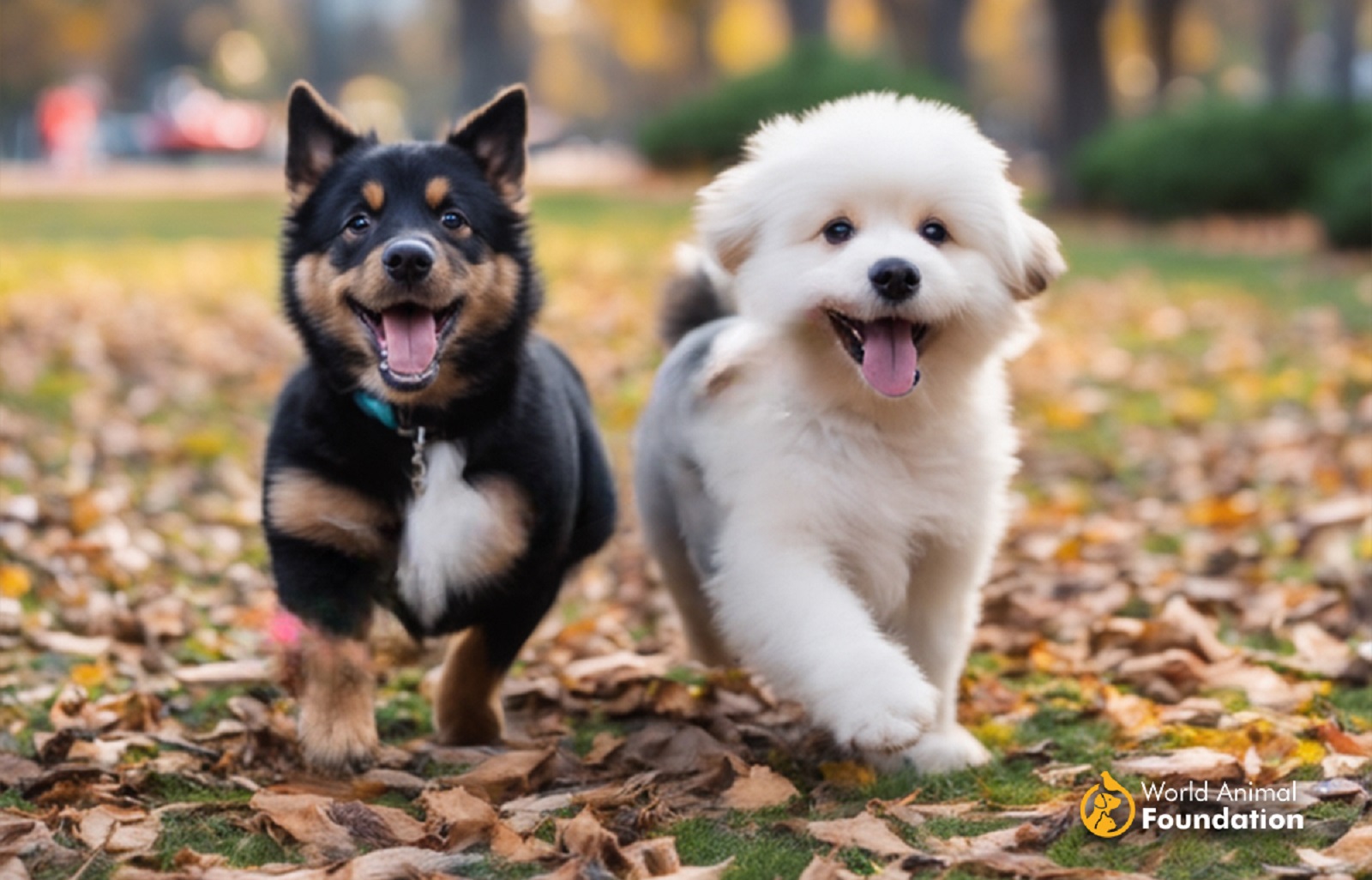Is there anything better than a cute dog? (Besides a cute kitten.) The dogs we present to you need a blue ribbon for cuteness. There are poodles and papillons and border collies on this list, and you’ll find out what makes them cute on the inside, too.
Whatever it is about humans that makes them appalled by Chinese crested also makes them swoon for fluffy and adorable dogs. It’s a world of soft fur, pretty eyes, and fancy tails that make these canines cuter than a baby’s toes.
Cute dogs don’t need makeup, high heels, or a new wardrobe to make them stand out. All they need is their natural beauty. So, if you’re ready to smile from ear to ear, join us as we salute the dogs that make us go, “Aww!”
Spoiler alert: Cuteness overload.
Cutest Dog Breeds
If you’re the guardian of one of these dogs, congratulations! It’s hard to get enough of their faces. But even if you own a Mexican hairless dog, you’ll be tickled pink to hear about these outgoing, gorgeous breeds.
Without further ado, let’s get started and talk about which canines are the ones who make us speak doggy-talk every time we see them.
1. Maltipoo
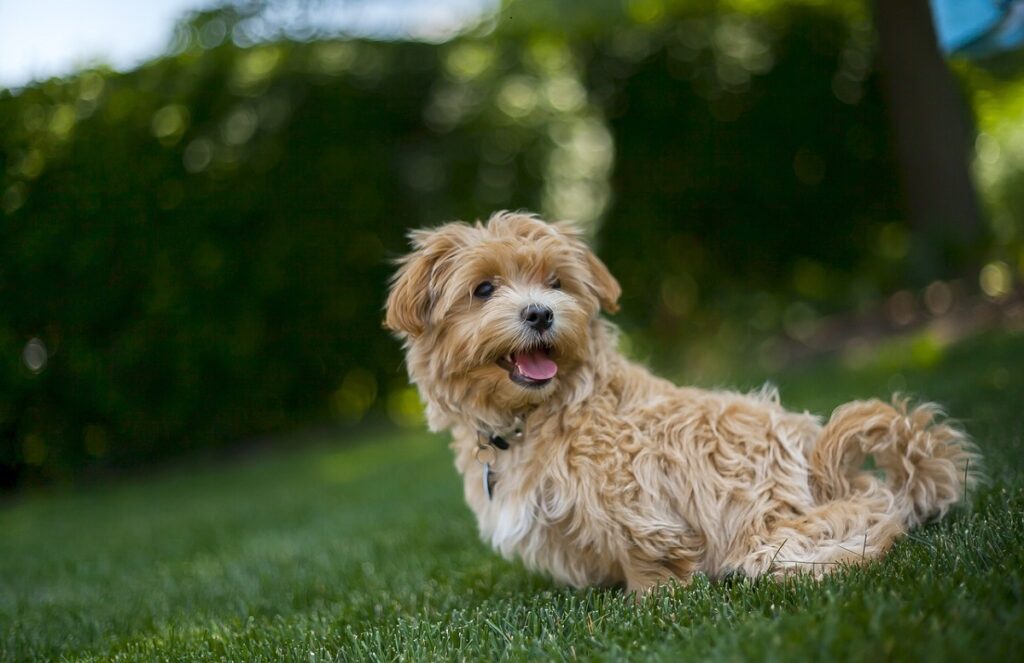
Affectionate, playful, and smart, this mix is a cross between a Maltese and a toy or miniature poodle. It helps your IQ when you have a parent who’s a poodle. They’re one of the smartest breeds out there. Maltipoos are companion dogs that weigh about 10 lbs. With their fluffy hair and small stature, they can’t help but be cute. .
2. Bernese Mountain Dog
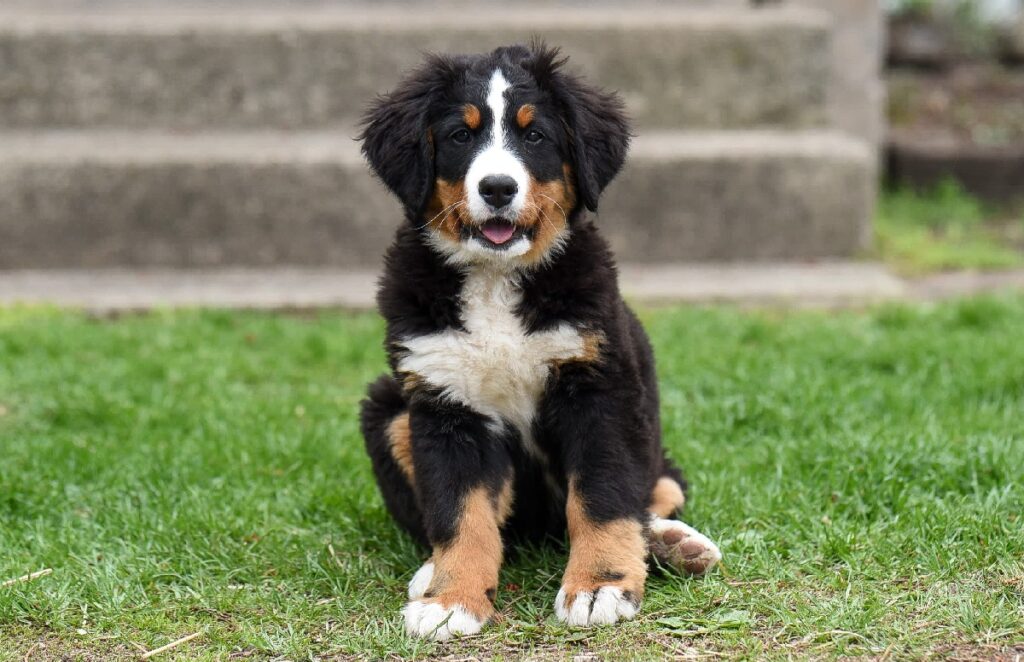
You almost always see Bernese mountain dogs smiling, which is true beauty. These silky-haired, calm, good-natured dogs go through life with a spring in their step and a desire to please. Their sweet and affectionate nature makes them cutie-patooties.
3. Pembroke Welsh Corgi

With thick fur and a bushy tail, these family dogs are born cute. Princess/Queen Elizabeth agreed and had corgis all her life. Gentle with small children, Pembroke Welsh Corgis will tell you what they want you to know. Besides barking, they make excellent companions. These dogs made their way to America in the 1930s and have been stealing hearts ever since.
4. Chow-chow
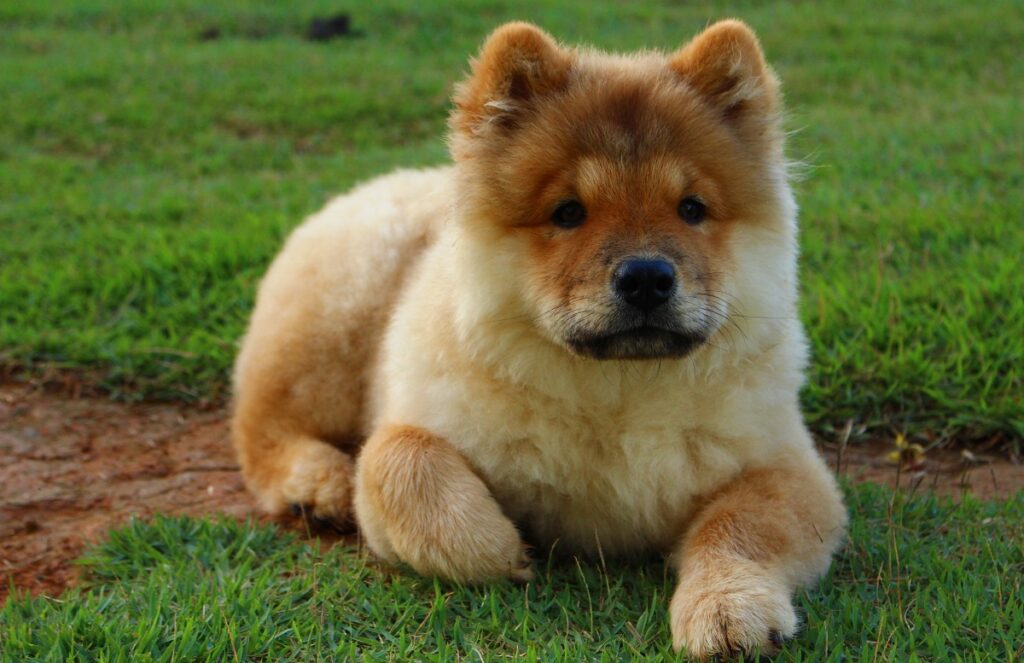
I had a Chow mix many moons ago, and her sweet face often got her out of trouble. Her blue-black tongue was usually a topic of conversation. Their deep-set, almond-shaped eyes that sit surrounded by a shock of fur make them resemble a lion. Chow chows can have a stubborn streak, but with that personality, curly tail, and precious face, you can’t be upset for too long.
5. Golden Retrievers
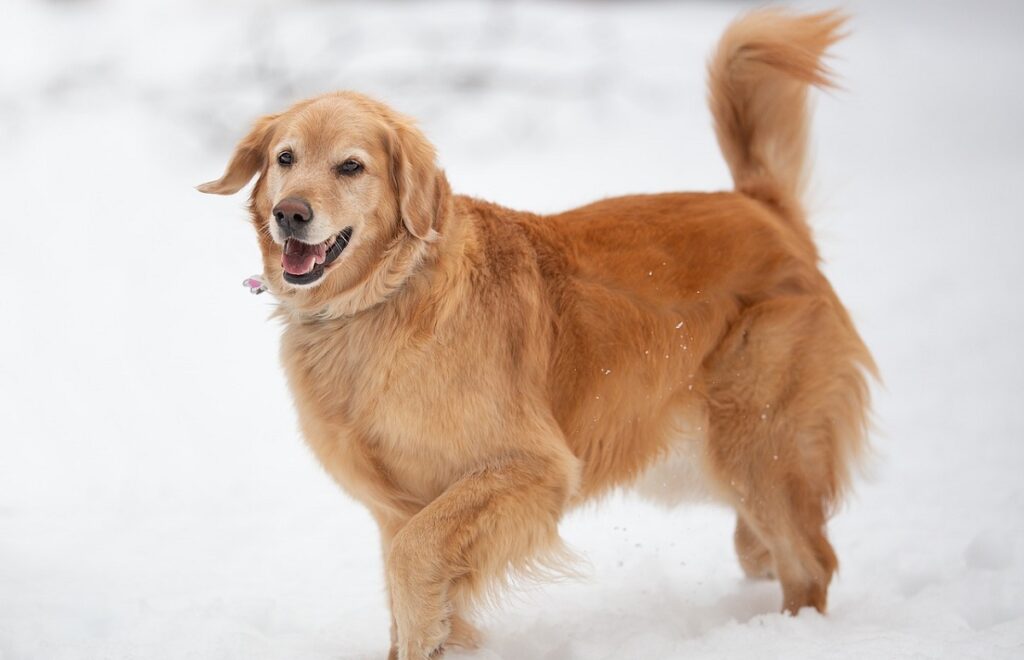
If anything can get you out of a bad mood, it’s a golden retriever. Their feathery hair, floppy ears, and infectious smile would have a dictator smiling. Their double coats are mostly golden shimmer, and if you have children, they’ll have a nanny for life. Goldens are patient, kind, and playful. They have all the right stuff to be your best friend.
6. Cavalier King Charles Spaniel

Their big, dark, loving eyes will melt your heart and often get them almost anything they want. With long, feathered fur on their feet, their guardians find them irreplaceable, and many would never have a different breed. Lovers of children, the elderly, and other dogs, there’s almost no one a King Charles doesn’t like.
7. Shih Tzu
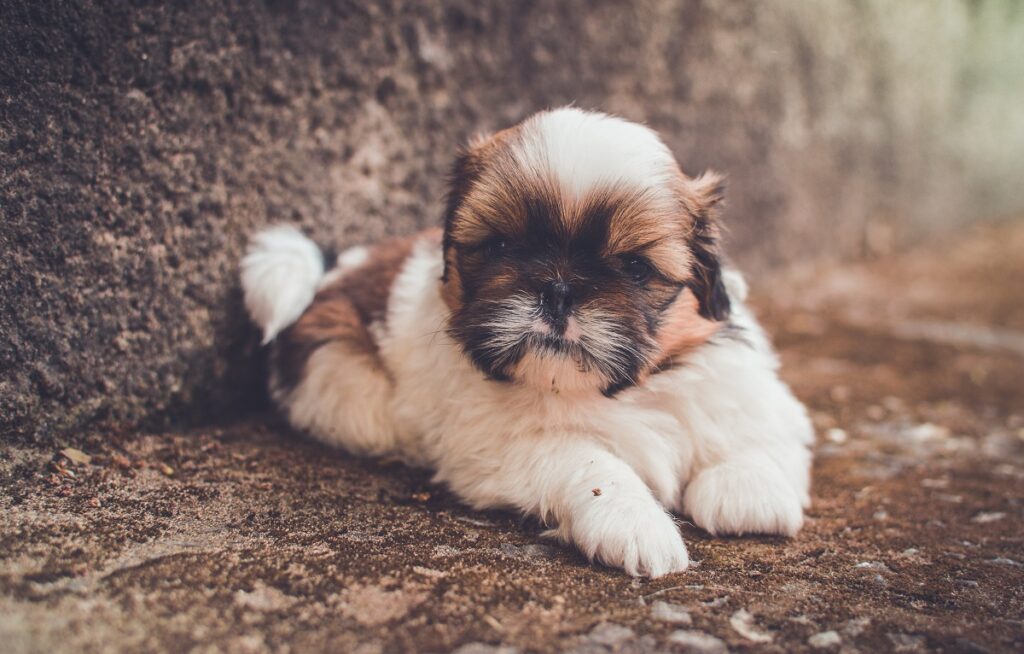
These little boogers are spitfires and seem to know what beauties they are. From their tiny mouths to their downy hair, these companion dogs will insist you fall in love with them. Shih Tzus are spunky, outgoing, and love when they’re the center of attention. Just make sure they know they’re not the boss. Well, sometimes!
8. Dachshunds

Hotdogs always bring smiling faces, especially when they’re of the doggy variety. Low to the ground with long and slender muzzles and short legs, Dachshund’s stretched-out bodies might be the biggest draw of all. This bearer of long and droopy ears is courageous, and the cherry on top? They’re excellent watchdogs.
9. Yorkshire Terrier
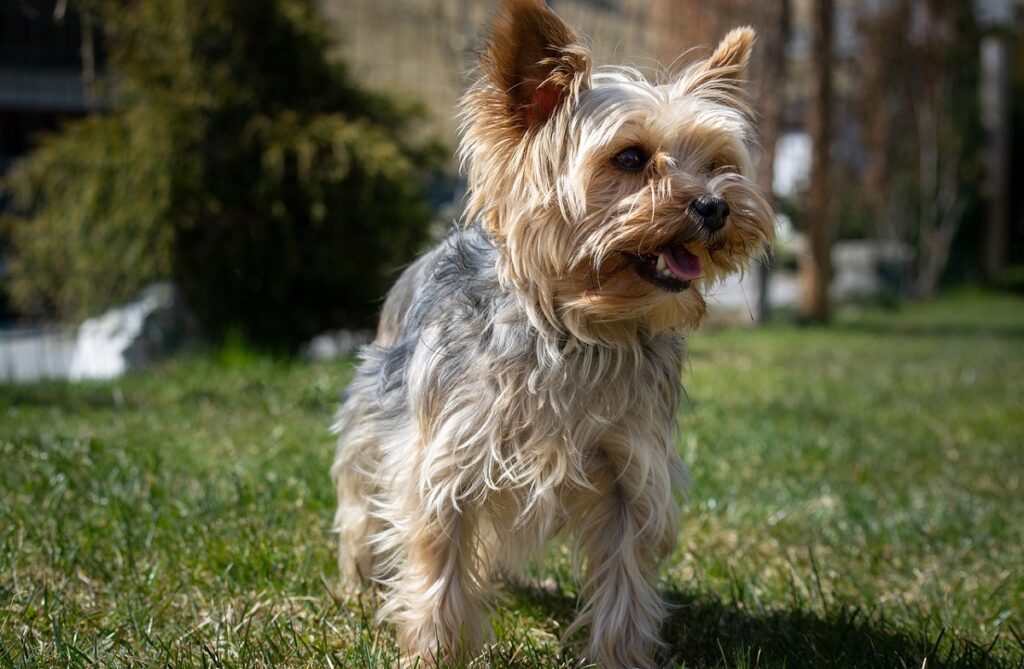
This cutey-bug looks incredible with short or long hair. (Don’t we all wish we could say that?) When the “Yorkie” hangs his tongue out, he appears to be smiling for the camera. Energetic, feisty, and affectionate, these dogs will have you trained in no time. Yorkies are 7-lb balls of energy with long, straight, bluish-and-tan fur. Just right for petting.
10. Border Collie
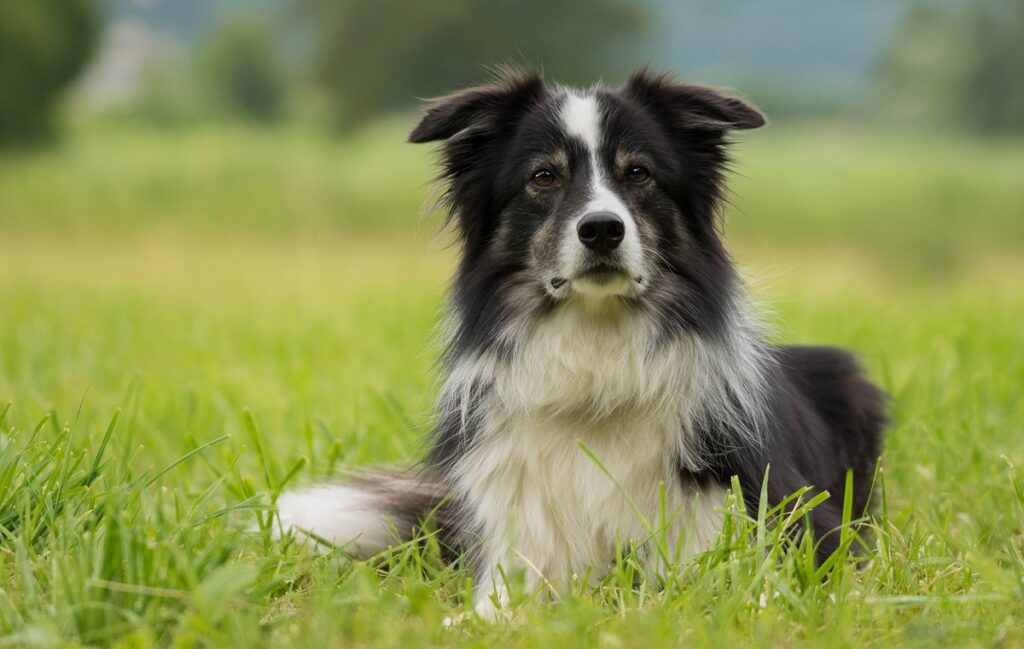
These herding dogs make a rabbit look slow. Their sometimes blue eyes are mesmerizing, and their entire face says, “I’m ready!” Border collies have an intense gaze and will pull you in with their flowy hair and spotty colors.
They’re medium-sized dogs with males weighing between 30-45 lbs. and so smart you might find yourself having long conversations with them. Tell them anything. They can keep a secret.
11. Boston Terriers

You’d think a flat-faced breed wouldn’t make the list, but then you haven’t seen a Boston terrier. When he cocks his head, those long ears make him irresistible, and his mostly black-and-white colors are all in the right place for pure perfection. They’re even called “The American gentleman” since they look like they always have a tuxedo on.
12. Siberian Husky
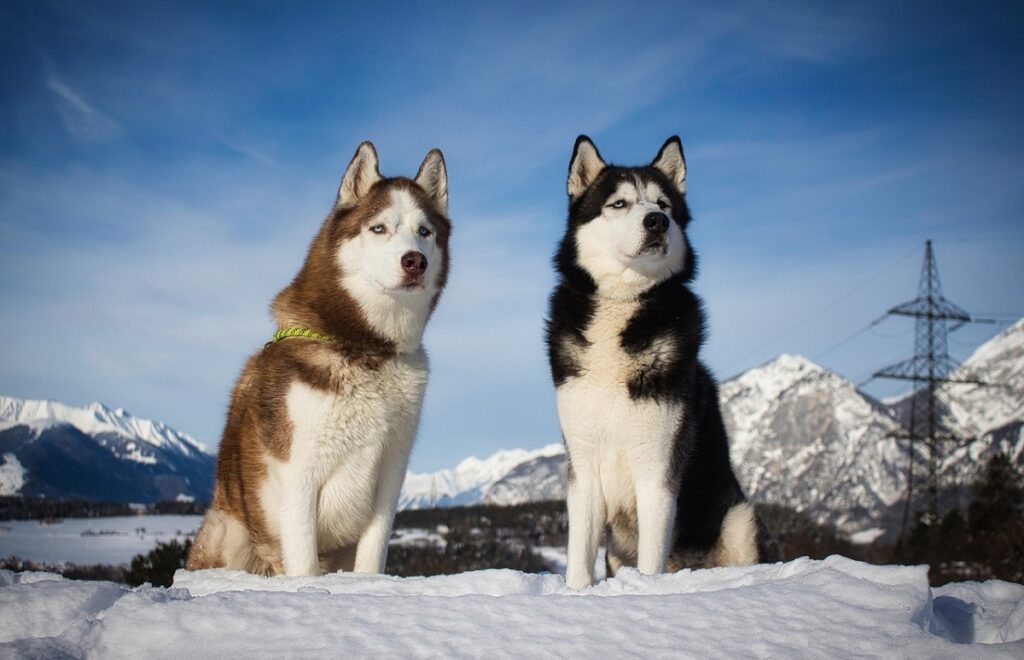
Well, let’s just call this dog breed what they are – stunning. You can spot a husky’s brilliant blue eyes from a mile away, and his markings frame the eyes like a picture. His proportions are all symmetrical, and these working dogs resemble wolves like no other. They have an easy disposition, too, so be prepared to fall in love.
13. Pug
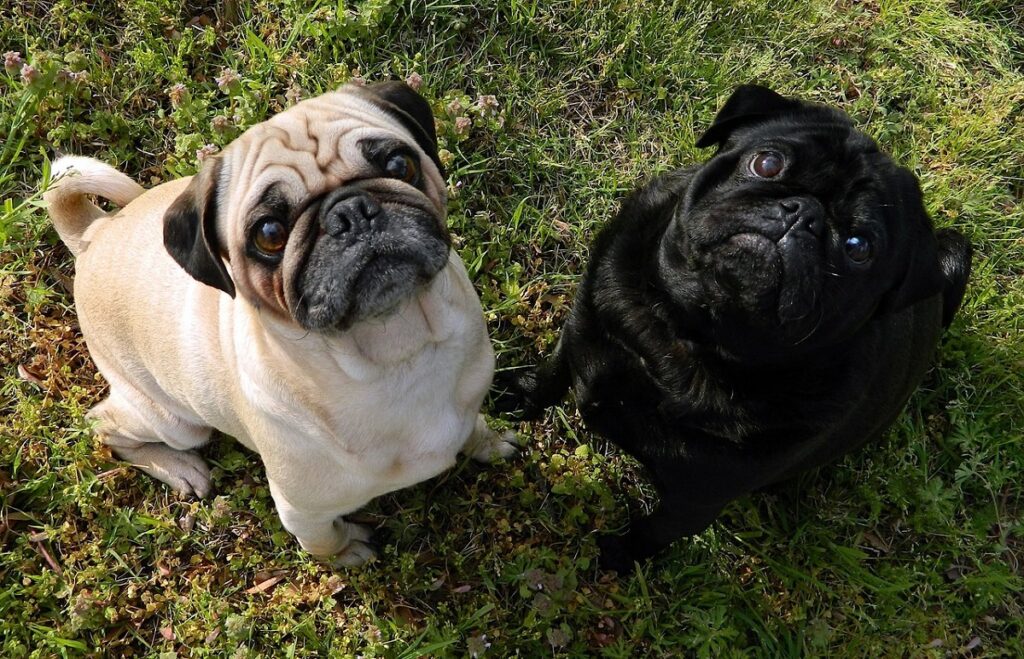
Look at a pug’s picture and try not to giggle. They’re that cute. The perfectly positioned wrinkles on their foreheads make them look like they’re saying, “Excuse me?” every time you don’t give them a treat. I’m not sure if there’s a more tightly curled tail in the dog world that gives them that special something.
14. French bulldog
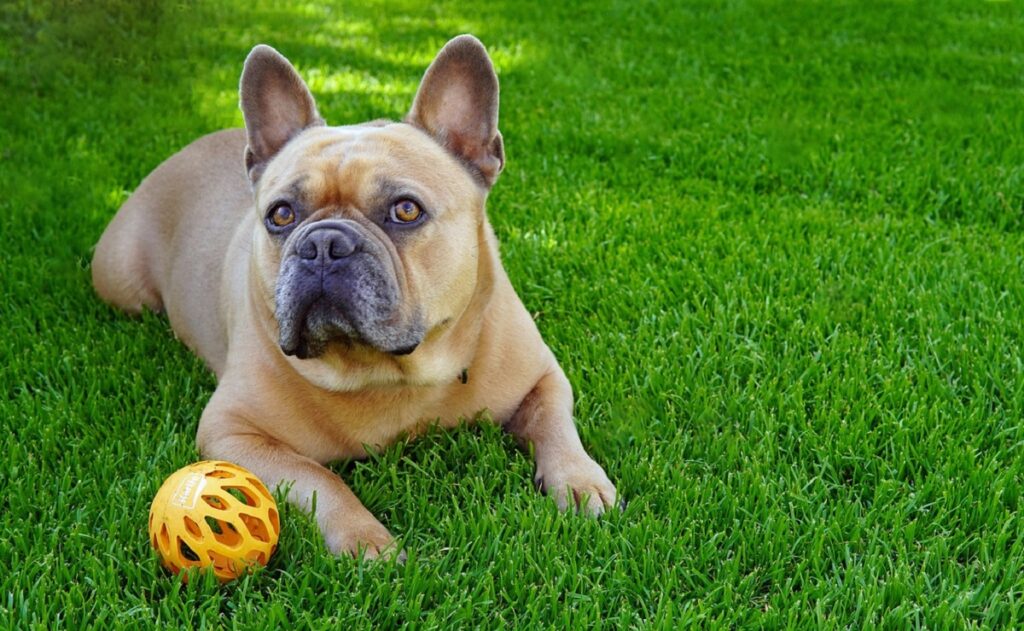
These cute pooches are all ears and ready for anything. With a compact and muscular body, this stocky breed is a charmer. These people-pleasing canines are fabulous guard dogs, highly intelligent, and adapt well to families or singles. The “Frenchie” will have you wrapped around his paw in no time.
15. Pomeranian
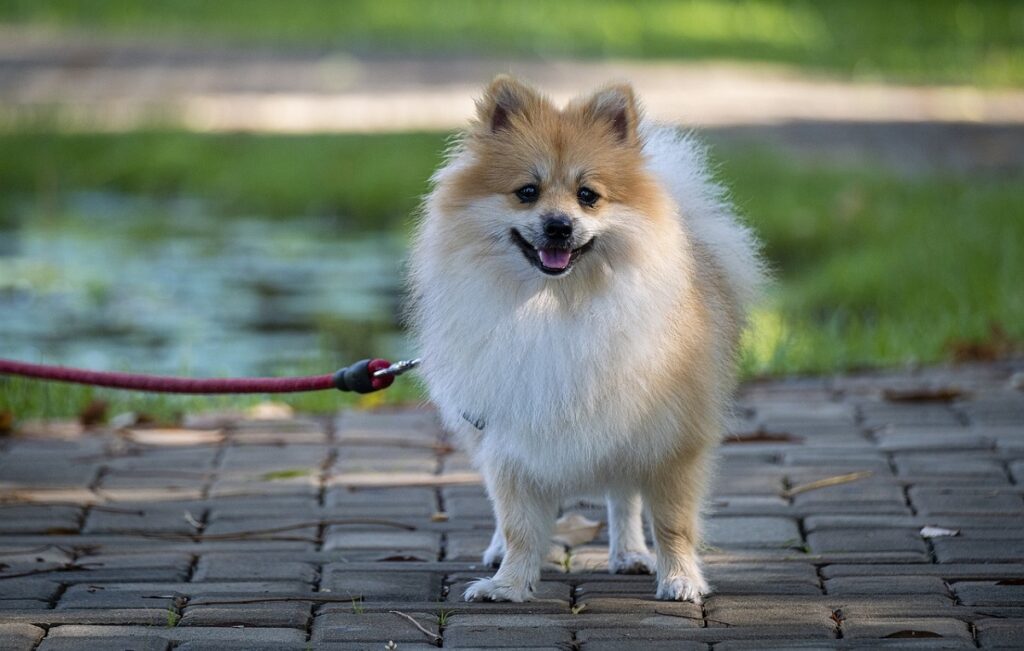
Pomeranians are small floofs with a big personality. Feisty dogs, they’re still people-oriented and weigh in at 3-7 lbs. They’re descendants of Arctic work dogs and are alert and protective. Plan on spending a lot of time with this irresistibly cute furry one. They’re small enough to put in your pocket (although we suggest a carrier), so you won’t be going out solo for long.
16. Australian Shepherd

You could easily call this dog a smarty pants, and rightly so. Whether they’re herding, retrieving, or jumping, they excel at it. Their shiny fur is brilliant, multi-colored, and oh-so-soft. The “Aussie’s” floppy ears, shaggy hair, and playful nature make him an all-around fun companion.
17. Goldendoodles

The Goldendoodle = Cuteness squared. This mix of golden retriever and poodle is highly sought after since it’s one of the most popular breeds in the US. Their curly hair (fluff everywhere!) and amiable personalities are standouts, so these cuties get a lot of attention wherever they go.
18. Beagle

Look up “cute” in the dictionary, and there should be a beagle. Anybody that’s Charlie Brown’s dog has got to be adorable. Cheerful, gentle, and adventurous, their noses are so powerful the US Customs and Border Protection has a “Beagle Brigade” to sniff stuff out. Cute AND smart police dogs!
19. American Staffordshire Terrier

One look in the kind eyes of a “Staffie” or “AmStaff,” and you’ll be theirs for good. Their thick, muscular build and wide chests let you know they’ll do anything to protect you. They have a short, single-layer coat and excel at agility courses and a good ole’ game of tug-of-war. Very affectionate (and cute!), you’ll never know a better friend.
20. Chihuahuas
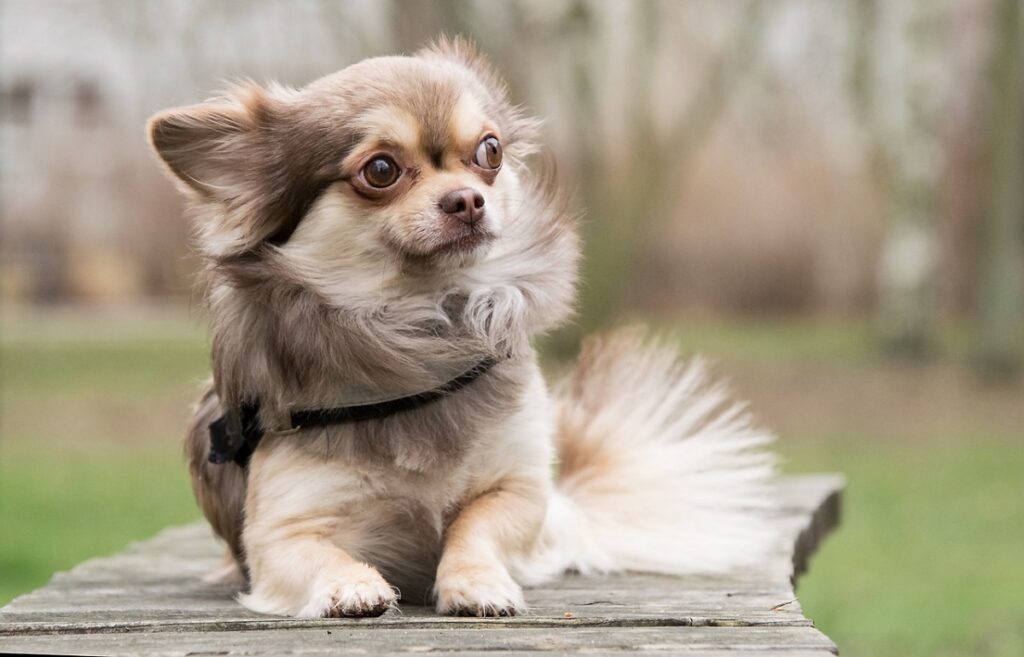
One of the world’s most recognizable breeds, these little dogs make big impacts. They’re playful, spirited, and loving companions. Those huge, inquisitive eyes and button nose push the cute needle right off the scale. Whether their coat is smooth and short or long and soft, it’s always pettable.
21. Labrador Retriever
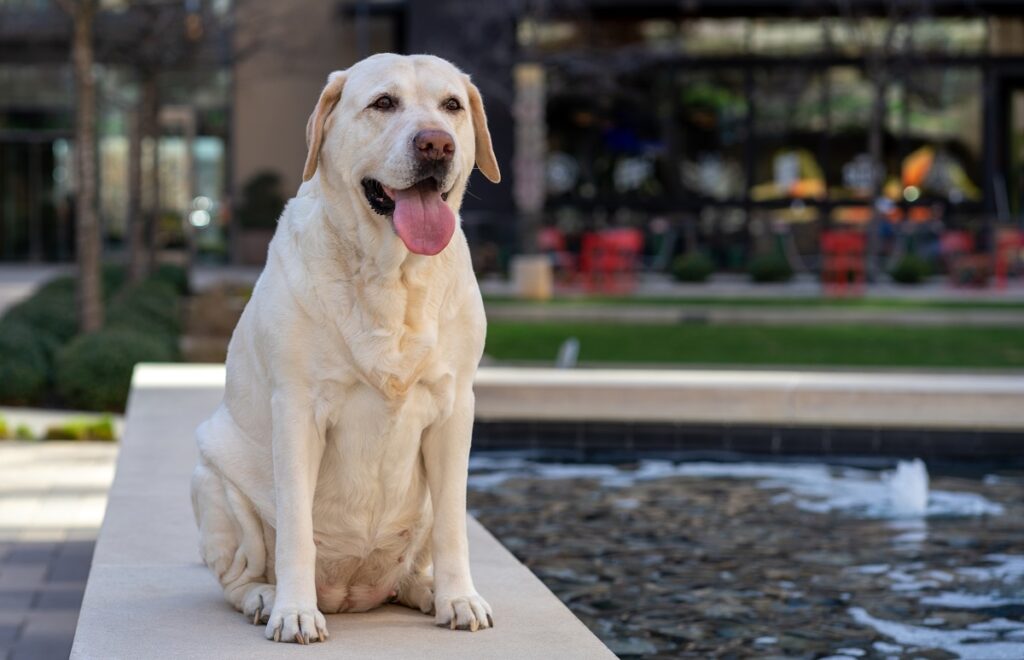
Drumroll, please…. It’s the cutest of the cute and friend ‘til the end, the lab. Their smiling faces just beg you to say hi. Yellow, black or chocolate, they’re all colorful personalities. They love your company and enjoy a good swim at the lake or a late night watching Netflix. The popularity of this “Good boy!” is unbelievable. Even cat people like them.
These hefty fellas and gals (55-80 lbs.) may have invented the word “play.” I live with a labrador retriever and know for a fact that if he wants to play, there’s only one thing I can do – Reciprocate his enthusiasm.
22. Shetland Sheepdog
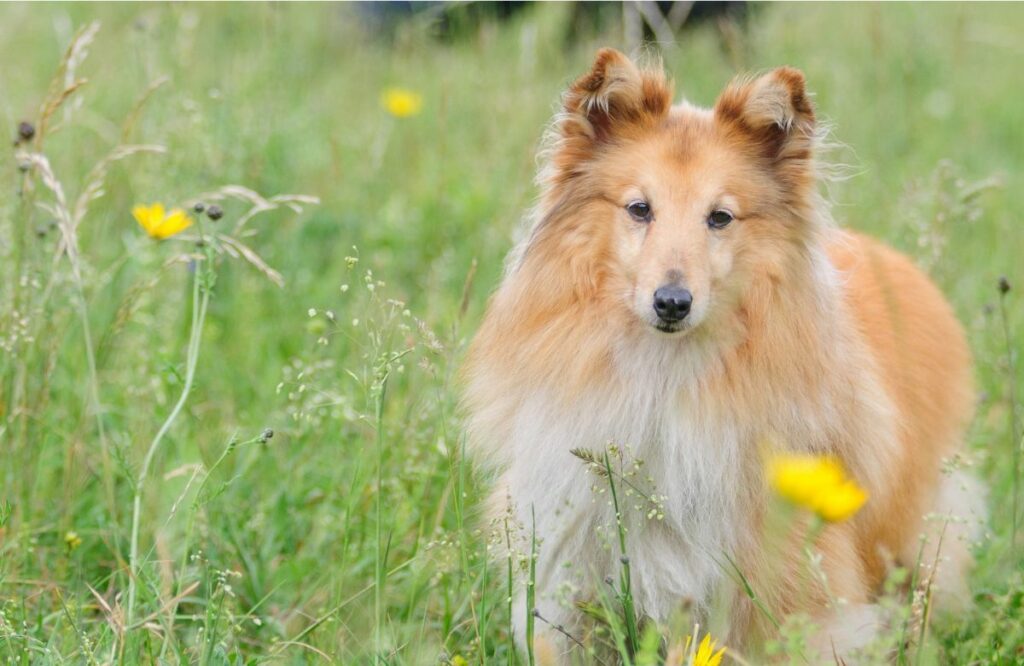
The beauty and regalness of the “Sheltie” will make you stop and take a second look. Not a Collie, but a dead ringer for one (albeit shorter). Their gorgeous hair looks like it was just blown out at the salon. Their coats are some variation of black, tan, white, or gray. They’re in tune with your moods, so if they’re grumpy, it’s time to take a coffee break.
23. Poodle
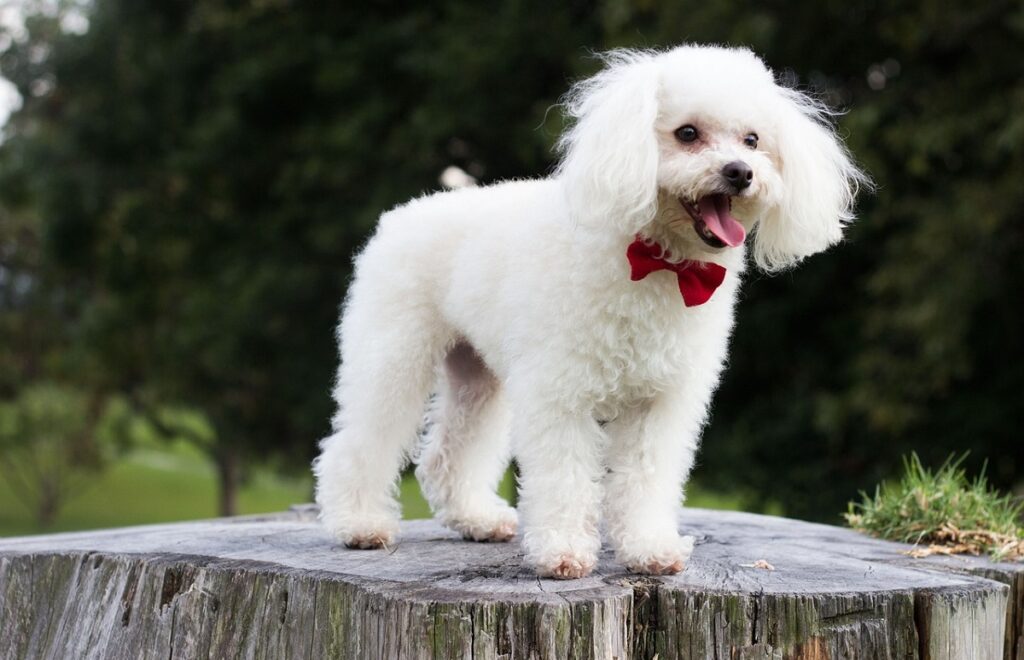
Poodles are scary-smart. They’re also cuter than a mouse eating a cracker. (Is that a thing?) The point is, you can see their cuteness and spunk in their trims/haircuts(!), and their poofs can be on their tails, legs, or head – Wherever he wants you to say, “Yep. I got it goin’ on.”
No matter if they’re toy/miniature poodles or standard, they’ll want to follow you around since they adore their humans. So you’ll always have someone to keep you in line.
24. English Setter
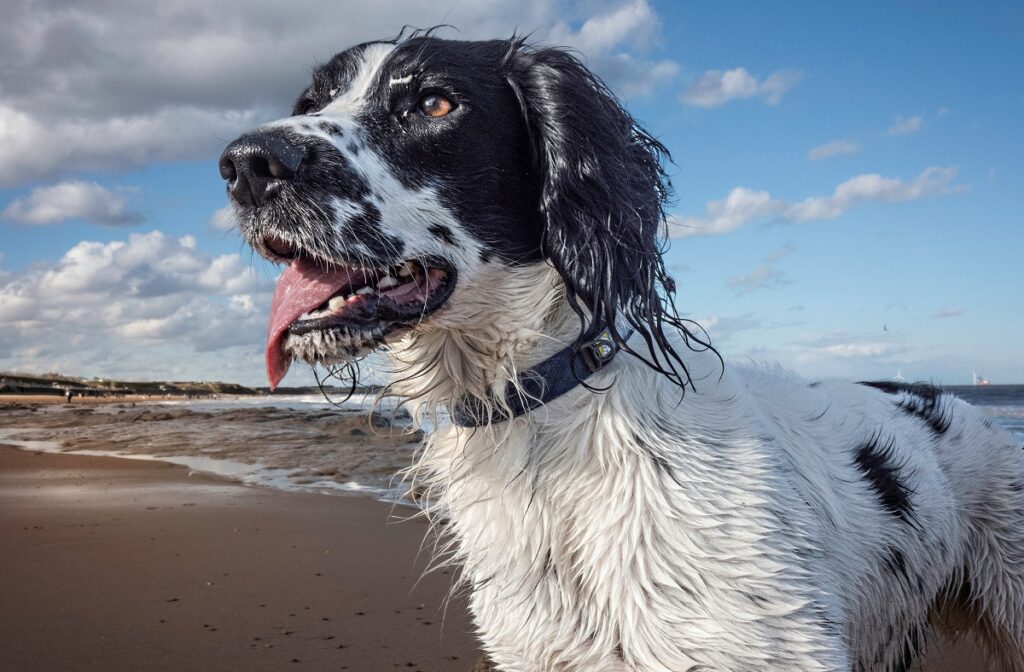
These noble canines are excellent sporting dogs: Bird and gun. Their feathery hair is on their tail, ears, chest, tail, thighs, and abdomen. It’s why they look all…fringe-y. They’re born white and gain their spots that look like a beautiful spattering of paint as they grow up.
English Setters are called “the gentlemen of the dog world” and are as gentle as they are loving. Surprisingly, the males look masculine, and the females look feminine. Highly obedient (unless a squirrel runs by), they class the place up.
25. Papillon
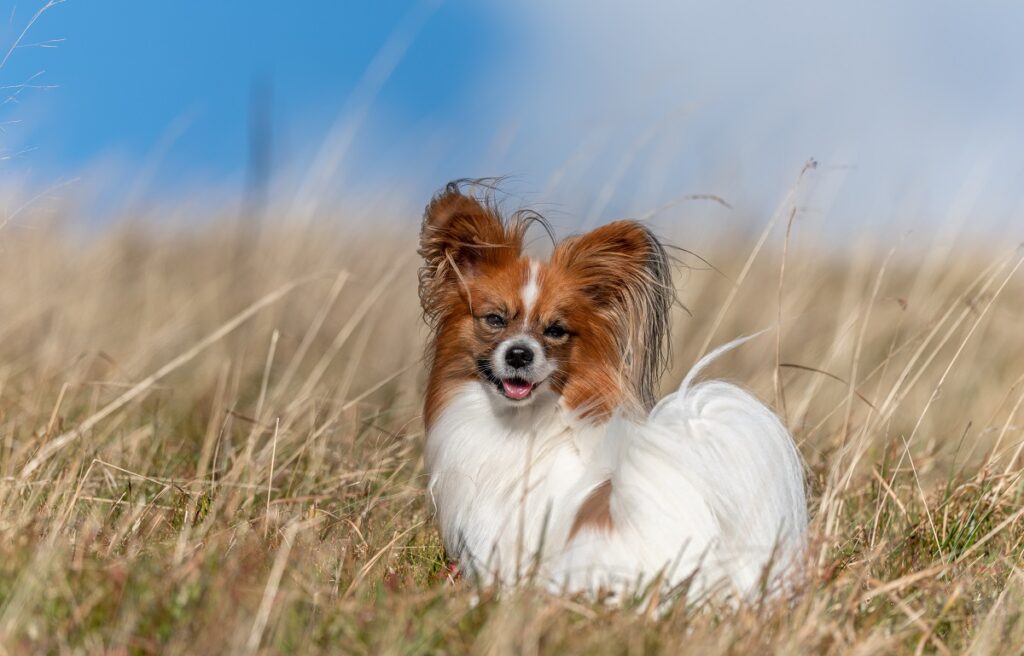
Little soulful eyes, a little nose, a little mouth, and big ears make Papillons absolutely adorable. Its features might look bizarro on a human, but on them, oh, it works! They look like butterflies with their ears as wings. In fact, the word “Papillon” means butterfly in French. Some have colored patches on their bodies here and there in just the right places.
They’re really good with kids, eager to please, and never meet a stranger. In Europe, in the 1900s, they were popular show dogs and had found their way to America. The AKC recognized the breed in 1915.
26. Dalmatian
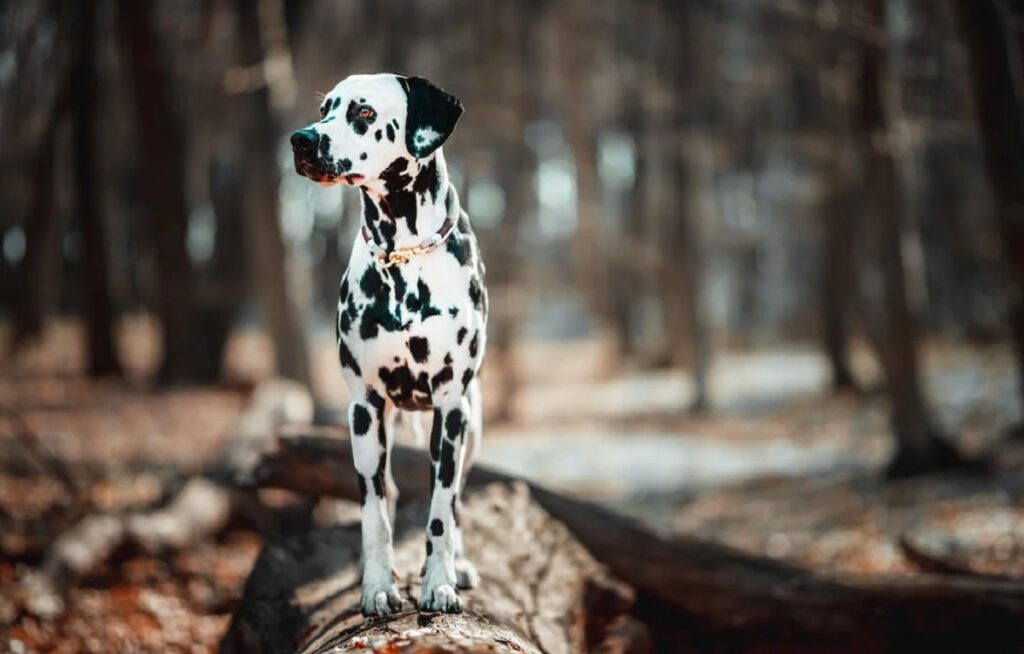
There’s no other place that spots know how to be in just the right, well…. spots than on a Dalmatian. From 101 Dalmatians to the dogs at fire stations, these adorable canines have had good PR from the jump. They couldn’t be cuter, from their eyeliner-ringed eyes to their soft and velvety fur.
Developed/Bred to be coaching dogs, the Dalmatian ran beside carriages, discouraging other dogs from approaching. Intelligent and obedient, circuses picked up on that, and they were favorite performers for a time. Dalmatians have well-proportioned bodies and heads, and people treat them like celebrities when they’re out and about. As well they should.
27. Cairn Terrier
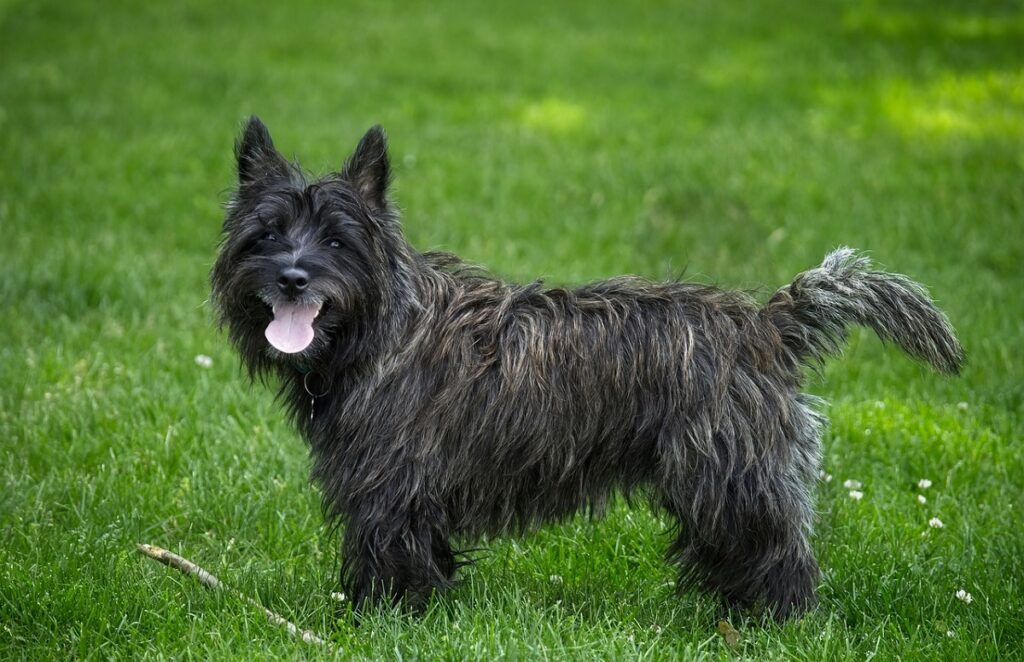
These adorbs dogs are too cute and perky for words, but I’m a writer, so I need to write something. Hailing from Scotland, these wee little sweet pups (less than 15 lbs.) are full of personality and energy. And you probably know a famous one already. Or you’ve seen them anyway…. It’s Terry from The Wizard of Oz. That’s right, the role of Toto was played by a Cairn terrier!
And here’s a bit of useless information but great to tell at parties: most of these dogs are left-handed. (It’s rare in dog-world, too.) Their ears can point straight up or bend over, and their hair is shaggy and ruffled. In a James Dean kind of way.
28. Soft Coated Wheaten Terrier

This Irish-bred dog can do lots on a farm and with his family. His soft, silky coat lends itself to many a snuggle session. Full of personality, “The mature Wheaten should exhibit a gently waving jacket with color varying from pale beige to shimmering gold,” says the soft-coated Wheaten Terriers Club of America. Whatever color they are, their cuteness factor is real.
29. Shiba Inu
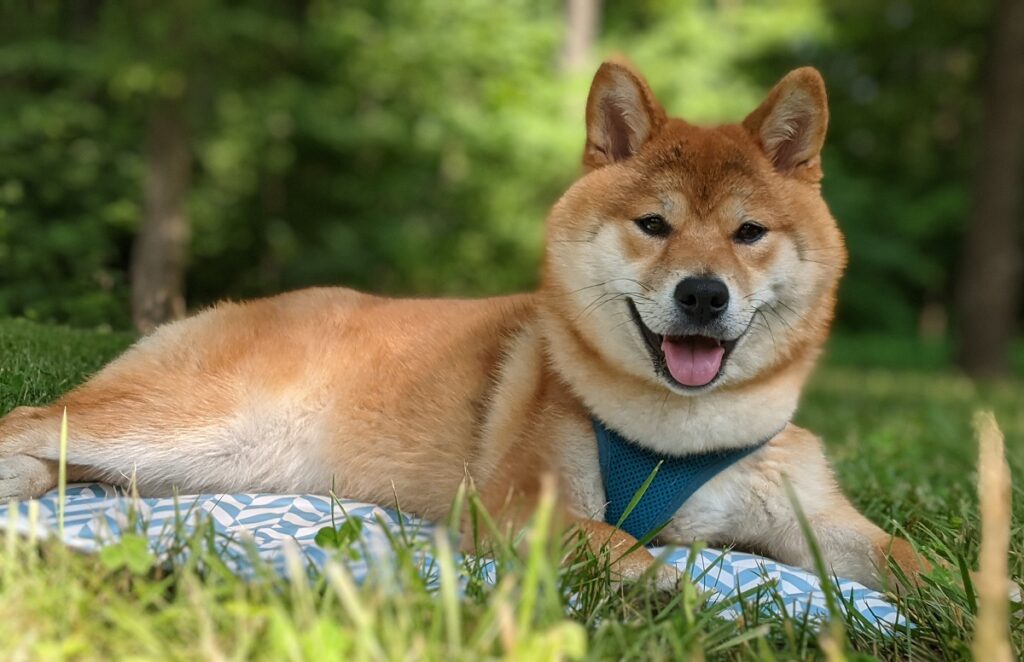
With their curled-up tails and mouths, the Shiba Inu can’t help but be cute. They have just the right amount of wrinkling around their necks and have one of the most strikingly beautiful coats in all of dog-dom. These wonderful animals were developed in Japan, and we’re so glad they traveled to America to grace us with their presence.
30. Welsh Springer Spaniel

Two things separate Welshies from other spaniels:
- Their tapered heads
- Their red-and-white coat pattern
Their coats are also weatherproof, so they can perform their sporting duties (bird hunters) in any climate. They’re happy and content whenever they’re with their guardians. Sleek beauties, you can be proud to show them off anywhere.
31. Cocker Spaniel

With their wide mouths and massive, floppy ears, these dogs are so cute their puppy-dog eyes will grab you right in the heart. They were bred to hunt and need time to do some fairly heavy exercising. English Cocker Spaniels are also incredible cuddle-buddies, so you’ll have the best of both worlds.
Cute Dog Names
One of the best things about a dog is that we get to name them. So, in the spirit of being creative, here are some of our favorite, unique names for our furry ones:
- Myrtle
- Hamster
- George
- Frank
- Newbie
- Boston
- Mojo
- Phoebe
- Gucci
- Sprite
- Sprinkles
- Rowdy
- Story
- Pebbles
- BamBam
- Reno
- Floozy
- Ted
- Nemo
- And, of course, Cutie!
FAQs
What Is the Cutest Dog Breed?
Tough call, and we hate to single out any of the adorable dogs we’ve mentioned. Cuteness is in the eye of the beholder, and blah blah blah. So, let’s cut to the chase: You can’t get much cuter than the Pomeranian.
What Are the Criteria for Selecting the Most Cute Dog Breeds?
You can have the cutest puppy in the world, but if you can’t live with its specific needs, it doesn’t do either one of you any good. Look for these things when you’re looking for a dog. Know their:
- Exercise requirements
- Grooming requirements
- Temperament
- Trainability
- Age
- Size at maturity
There’s more to consider, but that’s a perfect start.
Conclusion
We hope you’ve enjoyed this walk down cuteness lane and that you have an idea or two of which dog will be your next (or your first!) one. If we’re really honest, all dog breeds, including mixed, are cute in their own way, so think of them like that before your selection. And don’t forget the seniors — You can teach an old dog new tricks.
After all, they can’t choose who they go home with, cute or not, so why should we have blinders on? Finding a dog who looks like she truly needs some TLC (ideally from a rescue) may just be the perfect one for you. Then you’ll see how grateful our 4-legged (or 3-legged!) friends can be. And you’ll be one lucky dog.


